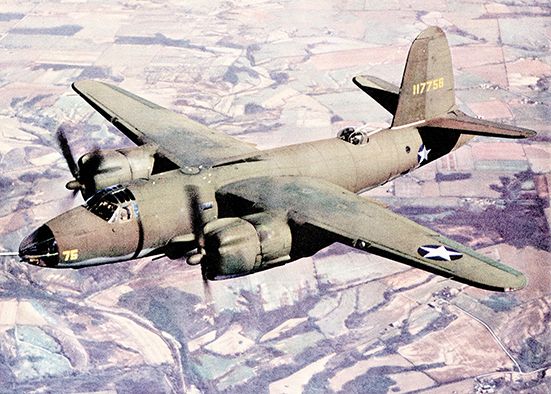US airmen lost their lives in Mournes as Allies prepared for D-Day landings
US airmen lost their lives in Mournes as Allies prepared for D-Day landings
8 June 2022

MONDAY marked the 78th anniversary of Operation Overlord. Better known as the Normandy landings, or D-Day, that pivotal day of June 6, 1944, set the wheels in motion for the Allied victory on the Western Front during World War Two.
County Down played a special role in preparing for that success, hosting thousands of US troops prior to the invasion.
Up to 30,000 were stationed in Bangor, with the Royal Hotel becoming a naval signalling station and The Pickie Hotel being used by the American Red Cross Club, where soldiers would socialise. Many military vessels moored in Belfast Lough, with three prominent US battleships — the Nevada, Texas and Arkansas — arriving in April 1944 and staying until they sailed to Normandy on June 3.
Just before departing, General Dwight D Eisenhower, Allied commander (and future US President), watched naval exercises at Ballyholme. He also used Bangor’s pier to visit the USS Quincy and other ships — it has since been renamed Eisenhower Pier.
But Bangor isn’t the only place where the US prepared for the war’s endgame. Armoured units were housed at Ballykinlar, signallers in Crossgar, tank destroyers at Downpatrick Racecourse and infantry at Seaforde House. Tollymore Forest hosted the US Army’s 5th Infantry Division, long before it became a Game of Thrones filming location.
The Mourne Mountains also saw their share of action — and some peaks still bear the marks of the US military.
Chimney Rock Mountain, the ninth highest Mourne peak, is where the five American airmen died when their US Army Air Force (USAAF) B-26 Marauder crashed on April 10, 1944, just as preparations for D-Day reached their peak.
Also called Sliabh an Aoire (Shepherd Mountain) as it overlooks Ballaghanery townland (Bealach an Aoire – Pass of the Shepherd), it is the easternmost Mourne summit that sweeps straight into the Irish Sea beside the Bloody Bridge car park.
Topped by spectacular granite tors, nicknamed ‘the Horsemen’, it offers stunning sea views as well as glimpses of Scotland, the Isle of Man and even Scafell Pike in England and Snowdon in Wales. These tors were the scene of the plane crash – and some debris is still visible.
The Martin B-26 Marauder was a twin-engine WWII bomber which saw action in the Pacific after Pearl Harbor, including at the Battle of Midway. It also supported the allied invasion of North Africa and various European operations. Difficult to fly, it was nicknamed the Widowmaker, the Martin Murderer, the Flying Coffin and the B-Dash-Crash, despite having the lowest loss rate of any USAAF plane in the war.
Some B-26s were based at RAF Toome on Lough Neagh’s north shore. Three of them took off on a training sortie around midday on April 10, 1944. The weather was overcast but not particularly bleak, with visibility of up to four miles. By mid-afternoon, they were circling over the Irish Sea, just off Kilkeel. With a cloud bank building over the Mournes, they decided to ascend over it.
But one plane fell out of position, ping behind and below the others. It then disappeared into the cloud. Its comrades desperately tried to make
radio contact. One even descended to its last known altitude. But there was no sign.
A stoneman at Carr’s Face quarry on Chimney Rock’s seaward slope recounted in the book, ‘12 Miles of Mourne’, how he heard engines roar so loudly that he thought a plane was flying right into him. But it eventually veered south, falling silent as it disappeared over the ridge.
He was unaware that it crashed close by. In fact, nobody knew. The crew was listed as missing until a US Army unit stumbled upon the wreckage while hiking days later. The pilot was blamed for falling out of position and flying into clouds in a known mountainous area, although many questioned why the aircraft was even in use, after being officially deemed ‘war weary’. All five bodies were buried in Lisnabreeny American Military Cemetery in Castlereagh before being repatriated in 1947.
There are other wartime marks on the Mournes too. Slieve Lamagan, called ‘The Creeping Mountain’ because its steep sides usually need to be ascended on all fours, was used for target practice by US Navy ships that
sat off the Carlingford coast. Bits of ordnance and rusting remnants of artillery shells can still be found there today.
Murlough beach was also a wartime training ground. Spare bombers and fighters were hidden in the dunes and Murlough Farm had its own landing strip. Murlough House hosted the US Army’s 1st Armoured Division and the 818th Tank Destroyer Battalion. On the beach itself, rotting remnants of anti-aircraft landing posts are still visible, as are concrete remnants of a pillbox — supposedly destroyed early in The Troubles to prevent it being used to attack Ballykinlar Army base.
There was even another wartime plane crash in the Mournes. On March 16, 1942, an RAF Wellington bomber travelling from Norfolk to RAF Aldergrove crashed on Slieve Donard’s lower slopes, with only one of its seven occupants surviving.
Like the B-26 Marauder, the Wellington was a twin-engine bomber. It was named after the first Duke of Wellington, who helped defeat Napoleon at the battle of Waterloo in 1815. Often flown by Polish crews, it was mostly used for night raids, including the first RAF night raid on Berlin. It later transitioned into an anti-submarine aircraft.
Unlike the American B-26 Marauder, it had a good safety record, so the incident in the Mournes is put down to human error alone. The Wellington encountered low cloud around Newcastle, which obscured the mountains and disorientated the crew. Veering off-course, they crashed near the Black Stairs on the north-facing slope of Thomas’s Mountain (in front of Slieve Donard).
No remnants or wreckage remain but if you climb Slieve Donard from Newcastle, you will walk right past the crash site. The Black Stairs is the area of exposed, rocky escarpment just beyond the circular stone ‘Ice House’, that you pass immediately after emerging from Donard Forest.
If you then make it to the top of Slieve Donard, look south towards Chimney Rock Mountain and spare a thought for the American airmen who lost their lives there 78 years ago, in the run-up to D-Day.


